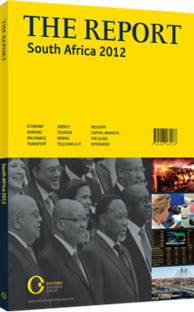Not a poultry sum: Domestic demand drives growth, as competition from imports increases
Driven by high domestic demand, the poultry segment has been growing consistently and is now the biggest contributor to agriculture’s share of South African GDP. It is without a doubt a national success story, although the segment will have to navigate some tricky issues if it is to continue its trajectory in the coming years.
STEADY EXPANSION: According to the 2011 “Poultry and Products Voluntary Report” by the US Department of Agriculture (USDA), the industry’s gross value exceeds R23bn ($2.8bn), making it the country’s leading agricultural segment, with a contribution of 18% to agricultural GDP. The industry has been growing steadily, with a 4% increase in broiler production to 969m broilers, or 1.3m tonnes of meat, in 2010. The USDA estimated a further 1% increase in 2011 to 980m.
This is good news for the government, which sees poultry as a key area for development. According to Imameleng Mothebe, director for Agro-processing, Industrial Development Division at the Department of Trade and Industry (DTI), “Poultry would generally be an industry that would be important for employment creation in South Africa.” The Bureau for Food and Agricultural Policy’s “Agriculture Outlook 2011” estimates that almost 15,000 additional jobs could be created in the poultry sector and almost 10,000 downstream, through the expansion of the industry.
The USDA expected demand in the local market to increase by around 5% in 2011. South Africa’s per capita consumption of broiler meat was 32 kg in 2010, well above mutton (3.2 kg), pork (4.6 kg) and beef (17.7 kg). However, consumption is well below many developed markets such as the US (43 kg per capita in 2010), suggesting that there is ample room for expansion.
IMPORTS: Despite these positive market conditions, aggressive pricing and the volume of imported broiler meat present significant challenges for domestic players. To some extent, such imports are exchange rate-driven, with an appreciating rand auguring well for the price competitiveness of meat imports. However, local producers, whose input costs such as feed have been steadily rising, are also struggling to compete with imports irrespective of exchange rate fluctuations. South Africa is increasingly on the radar of large-scale meat and poultry exporters.
“One potential threat as far as pig and poultry is concerned is that countries like Brazil, the US and Canada have been targeting Russia, but now Russia is seeking self-sufficiency, so these exporters will be looking at Africa instead, and particularly a country like South Africa,” said André Jooste, senior manager of the Market and Economic Research Centre at the National Agricultural Marketing Council.
BRAZIL: According to the South African Poultry Association, imports from Brazil reached 193,896 tonnes in 2010, a staggering increase from the figures in 1999 when Brazilian imports stood at 11,198 tonnes. The South American country accounts for 73% of all poultry imports into South Africa, according to the South African Poultry Association.
This threat has provoked concern among domestic producers, who believe that their Brazilian counterparts are dumping meat in the country. The government is investigating these allegations but is also being sure to treat the issue cautiously.
Mothebe said, “One of the issues is the level of support that some countries offer to their industries which we can’t afford for our industry. So when sometimes they think it’s dumping, it might not necessarily be so. To prove a dumping case is a very long process. We haven’t been able to get to this conclusion yet.”
In 2000, South Africa instigated anti-dumping duties against US producers, bringing imports from that country down from 31,000 tonnes in 1999 to 344 kg in 2005. The anti-dumping duties, which range from R2.42 ($0.30) to R6.96 ($0.85) per kg, were extended to 2011 and are now the subject of court proceedings. Whether the Brazilian case will get this far is unclear. Government attempts to deal with import threats are likely to be welcomed by local producers, who remain a very critical component of domestic agricultural output.
You have reached the limit of premium articles you can view for free.
Choose from the options below to purchase print or digital editions of our Reports. You can also purchase a website subscription giving you unlimited access to all of our Reports online for 12 months.
If you have already purchased this Report or have a website subscription, please login to continue.

